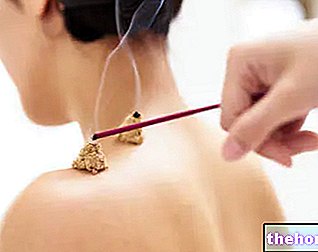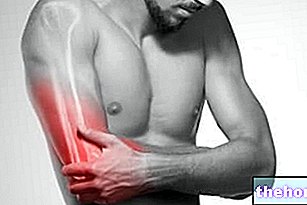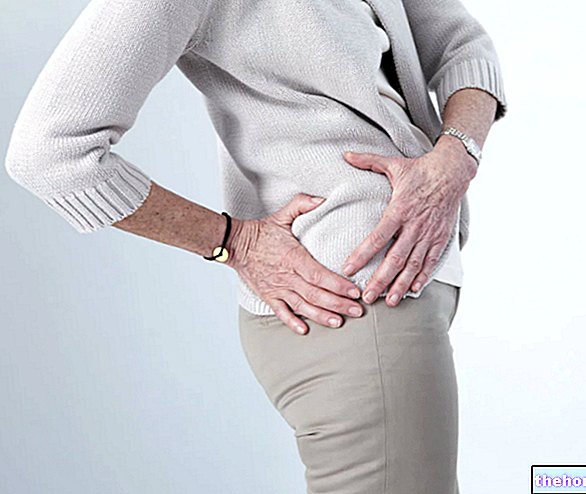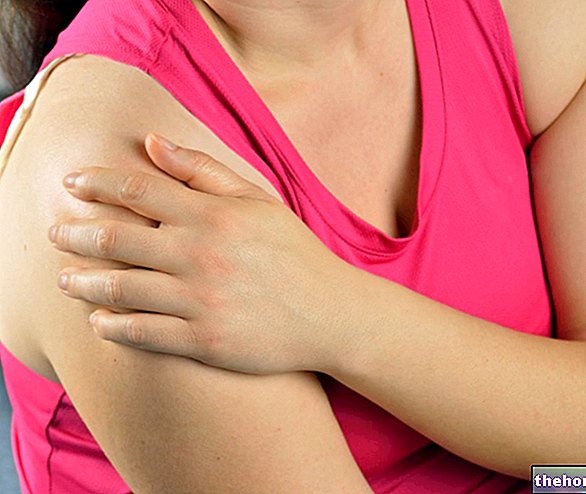Knee pain occurs very often in association with other local symptoms, such as stiffness, swelling, instability, skin redness and reduced joint mobility.
Treatment for knee pain varies according to the causes; this means that, during the diagnosis phase, the doctor must try to understand how the development of the knee pain is induced.
of the human body, placed between the femur (superiorly), tibia (inferiorly) and patella (anteriorly).
Its anatomy is quite complex and includes:
- The articular cartilage, which covers the lower surface of the femur, the inner side of the patella and the center of the upper surface of the tibia, protecting all these bones from mutual friction;
- The synovial membrane, which covers the joint from the inside and produces the synovial fluid, a fluid with a lubricating action for all the internal structures of the knee;
- The collateral ligaments, the cruciate ligaments and the patellar tendon, which, all together, guarantee the stability of the joint and the correct alignment between the femur and the tibia;
- The synovial bags, which are small sacs of synovial membrane, filled with a lubricating fluid very similar to synovial fluid;
- The internal meniscus (or medial meniscus) and the external meniscus (or lateral meniscus), which are pads of cartilage with a cushioning and anti-friction function, located on the sides of the upper surface of the tibia.
Thanks to its strategic position and its particular anatomy, the knee plays a fundamental role in supporting the weight of the body and in allowing the extension and flexion movements of the leg, during a walk, a run, a jump, etc.
and, exclusively in young people, growth imbalances.
Injuries that cause Knee Pain

Knee pain injuries include:
- The partial or total tear of some ligament in the knee. With course from the femur to the tibia or from the femur to the fibula, the knee ligaments are in total 4 and are called: anterior cruciate ligament, posterior cruciate ligament, medial collateral ligament and external collateral ligament.
Knee pain due to tearing of some knee ligament is particularly common among those who play sports such as football, basketball or rugby, where rapid changes of direction are expected during running. - Bone fractures. In particular, the fracture of the distal end of the femur, the fracture of the proximal end of the tibia and the fracture of the patella are responsible for knee pain.
- The injury of the medial or lateral meniscus. The injury of one of the two menisci can be the consequence of both severe acute trauma to the knee, and repeated microtraumas over time.
Knee pain following the rupture of one of the menisci mainly affects those who practice sports and jobs that subject the knee joint to significant and / or continuous stress. - Bunions in the knee. Characterized by inflammation of a synovial bursa of the knee, knee bursitis can be the consequence of acute severe trauma to the knee or of repeated microtrauma over time.
Among the various knee bursitis, goose leg bursitis, prerotellar bursitis (or washerwoman's knee) and infrotellar bursitis stand out. - Laceration of the patellar tendon. It is the tendon injury that joins the lower part of the patella to the tibial tuberosity of the tibia.
Knee pain resulting from tearing of the patellar tendon is more frequent in those who practice sports that stress the knees (eg football, rugby, etc.). - Dislocation of the patella. In medicine, "patella dislocation" (or patella dislocation) is the term that describes the abnormal sliding of the patella towards the inner or outer side of the knee.
To cause the dislocation of the patella can be a strong trauma to the damage of the patella itself or an excessive and sudden twist of the knee.
Functional Overload Syndromes Causing Knee Pain

Functional overload syndromes are conditions that result from the exasperated repetition of a movement that improperly stresses a muscle, tendon, ligament or joint, causing it to become irritated or inflamed.
Among the overload syndromes responsible for knee pain, they deserve a mention:
- The ilio-tibial band syndrome. It is the condition that arises from the inflammation of the band of fibrous tissue located along the outer thigh and which runs substantially from the hip (iliac crest) to the portion just below the knee (lateral condyle of the tibia).
Knee pain due to ilio-tibial band syndrome most frequently affects those who practice sports such as long-distance running (it is no coincidence that the syndrome in question is also called runner's knee) and cycling. - Patellar tendonitis. Also known as jumper's knee, it is inflammation of the patellar tendon.
The knee pain associated with patellar tendonitis mainly affects those who practice sports in which jumps and leaps are frequently expected. - Tendonitis of the quadriceps femoris. It is the inflammation of the tendon insertion that connects the quadriceps femoris muscle to the patella.
Knee pain due to quadriceps hamstring tendonitis most frequently affects people who play sports, where bending on the legs is frequent.
Forms of Arthritis that Cause Knee Pain

In medicine, the term "arthritis" refers to the inflammation of one or more joints in the human body.
Typical forms of arthritis associated with knee pain are:
- Knee arthrosis (or gonarthrosis) It is the most common form of arthritis ever. Associated with aging, it is characterized by the progressive degeneration of the articular cartilages.
- Rheumatoid arthritis. It is the second most common form of arthritis, after the aforementioned arthrosis. It is a chronic autoimmune disease, with unknown causes, which attacks the joints with joint capsule and synovial membrane, such as the knee, hip , the joints of the hands etc.
- The pseudogout. It is the inflammatory condition resulting from the accumulation of calcium crystals in the joint provided with a joint capsule, such as the knee. It is called pseudogout, because it causes symptoms very similar to gout.
- Septic arthritis. It is joint inflammation sustained by a generally bacterial infection. Septic arthritis can cause very profound damage to the affected joints.
Causes of Knee Pain in the Young
In the young individual, knee pain is usually due to two syndromes, called Osgood-Schlatter syndrome and Sinding-Larsen-Johansson syndrome, both of which result from an imbalance between (faster) bone growth and growth. musculo-ligament (slower).
Knee pain in the young, however, can also depend on forms of juvenile arthritis; these forms of juvenile arthritis are uncommon and, in addition to the knee, they can also attack other important joints of the human body (eg: ankle, wrist, etc.).
Other Causes of Knee Pain
Other conditions associated with knee pain are: Baker's cyst, gout, popliteal tendonitis, midpatellar fold syndrome, laceration of the plantar muscle tendon (injury also known as "tennis leg"), laceration of one of the tendon insertions of the hamstring muscles and patellofemoral syndrome (or patellofemoral syndrome).
For further information: Knee tendonitis: the various types For further information: Baker's cyst: What is in the detailsRisk factors

The causes of knee pain are conditions associated with various risk factors; among the latter, the most common and recurrent are:
- Practicing sports or jobs that put stress on the knees. Among the sports at risk, there are all those in which there are races with sudden changes of direction, jumps, leaps and repetitive gestures such as the continuous bending of the knee; jobs at risk include all those that force you to bend over your knees, rest your knees on hard surfaces or drive a vehicle for many hours a day.
- Obesity. Excessive body weight stresses the joints of the lower limbs, the knee and ankle in particular.
- A past history of knee injuries. Compared to people who have never suffered from knee pain, those who have suffered a knee injury in the past are more likely to experience a similar new injury or a condition such as osteoarthritis.
- The lack of elasticity and tone on the part of the thigh muscles. A sturdy quadriceps femoris ensures greater control of unnatural knee movements, thus protecting against injuries to this joint.
Symptoms Associated with Knee Pain
Also depending on the triggering cause, knee pain may or may not be associated with other symptoms.
Symptoms that most frequently accompany knee pain include:
- Joint stiffness;
- Reduced mobility of the knee;
- Knee swelling (swollen knee)
- Knee instability (unstable knee);
- Emission from the knee, with every movement, of crunches or crackles;
- Redness and warmth in the knee;
- Formation of osteophytes inside the joint;
- Atrophy of the thigh muscles.
Complications
If the cause is a clinically relevant condition such as knee osteoarthritis or if the treatment of the triggering cause is inappropriate, the knee pain can take on the connotations of a chronic symptom, which afflicts the patient even during the performance of the most trivial daily activities ( eg: climbing stairs or entering or exiting the car).
When to see a doctor?
Knee pain is a symptom that should concern and lead the person concerned to see a doctor when:
- It has been going on for several days;
- Despite the rest and the application of ice, it persists and shows no signs of improving;
- It is the result of a knee sprain;
- It is associated with several other symptoms (e.g. joint stiffness, swelling, reduced joint mobility, etc.).
Who to contact in case of Knee Pain?
Knee pain and its causes are a matter for the orthopedic doctor, ie the doctor specialized in the diagnosis, treatment and prevention of pathologies that can affect the musculoskeletal system.
and they end, in most cases, with diagnostic imaging tests, such as magnetic resonance and / or knee X-rays. ;Medicines
Among the drugs useful for the management of knee pain, there are non-steroidal anti-inflammatory drugs (NSAIDs) and paracetamol; these are drugs that, through their anti-inflammatory action, relieve pain.
It is good practice to combine the use of an NSAID or paracetamol with the natural remedies described above.
Physiotherapy
Physiotherapy for knee pain usually includes proprioceptive exercises for the ailing joint and exercises to strengthen and lengthen the muscles of the affected lower limb; these exercises are particularly indicated when it is necessary to improve the stability of the knee and relieve the latter of a part of the body load (eg: a more toned thigh muscle supports part of the body weight which, in the case of weaker muscles , it would burden all on the knee).
Sometimes, however, physiotherapy also includes treatments such as tecar therapy, ultrasound and laser.
Injections
Injections for knee pain consist in the introduction directly into the suffering joint of substances designed to improve painful symptoms.
Among the substances used in the injections are corticosteroids - which are anti-inflammatory drugs - and hyaluronic acid - which acts as a kind of lubricant.
Surgery

Surgery for knee pain is reserved for patients who have not responded to conservative therapy or who can benefit from it (this is the case, for example, of those who have suffered an anterior cruciate ligament rupture: this ligament is unable to to self-repair, so it requires repair surgery).
Surgical treatment for knee pain includes:
- Arthroscopic operations for the repair of ligaments and / or menisci;
- Procedures aimed at the grafting of knee prostheses;
- Mesenchymal stem cell transplants for the regeneration of articular cartilage.



























